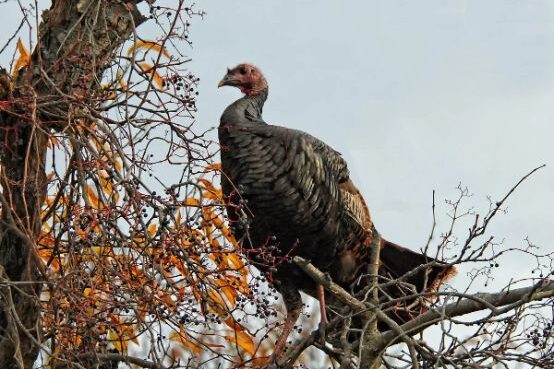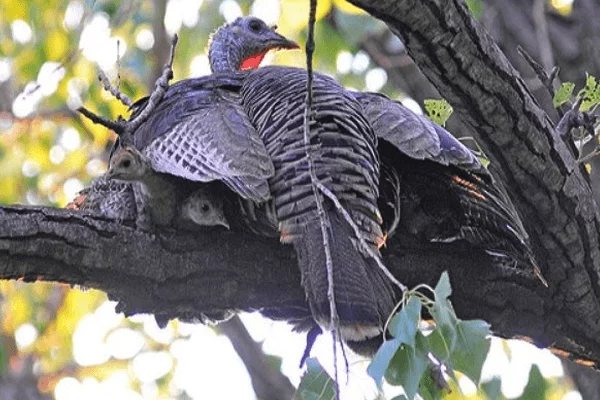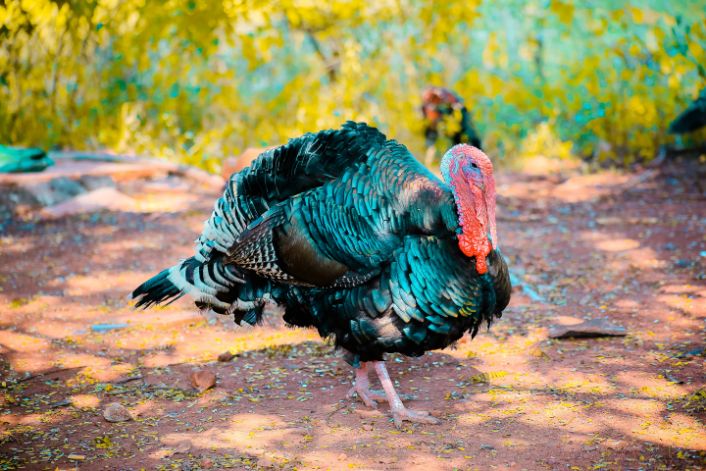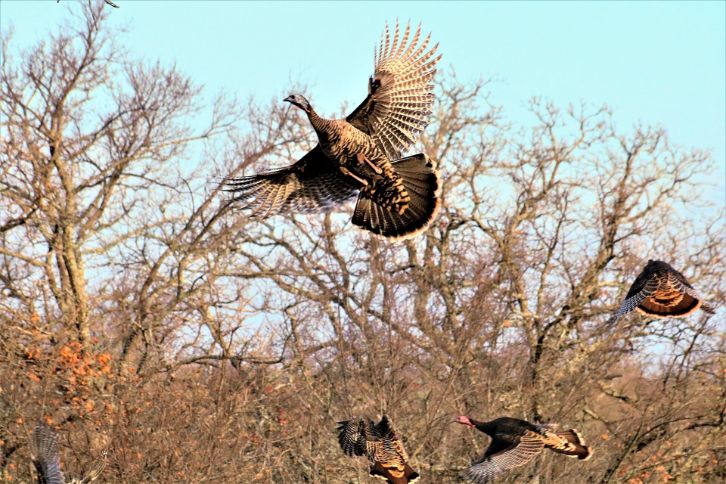You might not know how to respond if your kids ask you if turkeys sleep in trees. Here, we provide an explanation of this query as well as information on additional turkey behaviors.
Turkeys are large, hefty birds that spend the majority of their day foraging on the ground and rarely fly. Turkeys can fly, though it might come as a surprise to you. Short bursts of flight at 35 mph have even been observed! However, what happens at night, when they must sleep?
To protect themselves from predators and unpredictably bad weather, wild turkeys spend the night sleeping in trees. Turkeys are picky about the kind of tree they spend the night in, though. When deciding on a safe and secure location, several factors are taken into account.
Do Turkeys Sleep in Trees?
It’s a common misconception that because turkeys spend so much time on the ground during the day, they also do so at night. Wild turkeys, however, roost in trees at night, where they are protected from predators.
Since turkeys have poor night vision, tree branches offer a safe, elevated sleeping area where the majority of predators cannot reach them. Coyotes, foxes, and snakes are the main predators of turkeys in the wild, so trees provide a safe haven that is largely out of their reach.
Before descending and continuing with another day of foraging for food on the ground as the sun rises, turkeys will call to one another with soft yelps to make sure everything is alright and the rest of the flock is okay.
Only when nesting or housed in captivity do turkeys not sleep in trees. The egg-laying process is done on the ground by turkey hens, and it can take up to 28 days for the eggs to hatch.

Of course, during this time, turkeys are most susceptible to predators, which accounts in large part for why female turkeys live shorter lives than males do on average. A further 10–14 days pass after the eggs have hatched before the chicks can fly and roost in trees with their mother hens.
Turkeys kept as pets tend to be heavier and bigger than wild turkeys, and they are less adept at flying. They rarely need to sleep in trees because they are typically kept indoors in nesting boxes or brooders with no predators to worry about. However, they will probably prefer to sleep in trees if there are any nearby that they can fly into.
Where Do Wild Turkeys Sleep in the Winter?
When it’s cold outside and during the winter, wild turkeys roost or sleep in trees at night or after sunset.
In the wild, a turkey frequently prefers large, mature trees to smaller ones. A number of turkeys can roost simultaneously on the larger, more sturdy branches because they offer them space and support.
When building its habitat, this bird frequently favors pine trees over others. This is due to the fact that they are accessible all year long and that the forest area below is the cleanest for takeoff and landing.
They prefer clusters, though one pine tree will do just fine. Because cedar trees are so dense and difficult to enter and exit, turkeys don’t like to roost in them. Roosting on trees that are close to the water and on cliff edges are some of their other preferred locations.
Turkeys engage in a process known as foraging during the day. The wild turkey will then rub both feet together, using one foot at a time. It then scratches the ground in search of food.
They occasionally take a few fruits off the plants. They very rarely forage, though, when perched on tree branches. The turkey has a habit of eating food whole once it is discovered on the ground, which is later digested gradually. Turkeys roost on trees at night while their digestion is taking place.
Where Do Baby Turkeys Sleep?
It is only natural that young wild turkeys take pleasure in the security and comfort that come with being with their mother, just like young humans do.

A young turkey will be found sleeping or roosting among the mother’s soft feathers for the first few weeks of its life after breeding and after the eggs hatch. The location of this, though, is in a ground nest as opposed to being on a tree branch.
Usually, a turkey will build its nest among fallen leaves and beneath some trees. Turkey nests are typically located beneath dense bushes and enormous bush piles. The mother will occasionally build her nest in open hayfields when snakes and crows aren’t a serious threat.
The mother digs a depression in the ground. A turkey will use the nearby dry leaves and dead plant material to construct its individual nests.
Typically, they produce 4 to 17 eggs at a time. The eggs are pale yellow in color and occasionally come with a few pinkish or reddish-brown spots. A turkey spends just one-day nesting during its 25–31 day incubation period.
When the young turkeys are about a month old and ready, they fly to a low branch of a small tree where they once more roost or sleep in the warm feathers of their parents.
These young turkeys eventually start to roost as the adults do. Nevertheless, until the next mating season, the mother will continue to guard her young.
How Do Turkeys Sleep in Trees Without Falling?
Wild turkeys are very well-adapted to sleeping in trees. When a turkey is prepared for the night’s sleep, it will fly to their preferred branch and squat down just enough for its powerful toes to wrap around the branch and prevent them from toppling over.
Turkeys tend to move around a lot, so they don’t typically sleep in the same tree or on the same branch every night. However, if they live in an area with lots of water and food, they may favor a particular tree or group of trees.
What Kind of Trees Do Wild Turkeys Sleep In?
The location and type of tree that wild turkeys choose to roost in are carefully considered. Wild Turkeys prefer an area where they can take off and land easily because they are not the most graceful fliers.
Usually, this means they will locate the ideal tree nearby an accessible area with a soft landing area. For instance, areas that have been cleared, a field, or a small portion of a forest.

Another element is the tree’s canopy. Wild turkeys require a tree that offers adequate cover so that they can be hidden from predators and shielded from the weather at the time. With the availability and cushion that the fallen needles on the forest floor provide, needles are covered in all seasons.
Pine trees come in at the top of the list as the tree of choice for turkeys to sleep in. They frequently can be seen perched at a great height in a hemlock or other hardwood tree when the weather is good.
How Long Do Turkeys Sleep?
Turkeys can choose to sleep whenever they want or need to. Location, season, time of day, where the sun sets and rises, and whether or not it’s a warm or cloudy day can all affect it. Wild turkeys typically begin their day around sunset and go to bed around dusk.
To replenish the energy they just used to fly up in the tree and stay safe at night, turkeys must first sleep for a while.
Final Thoughts
The sleeping arrangements for wild turkeys are the same whether it is spring, summer, fall, or winter. Whatever the case, they will be perched high in the treetops in search of protection from weather and predators. These amazing creatures can adapt to any weather without significantly altering their daily routine.
On branches up to 30 feet in the air where they fly at night, turkeys snooze. They favor sparse forests over dense ones, preferring lone trees near open areas. Although they frequently reside in purpose-built brooders, turkeys kept in captivity do occasionally sleep in trees.
Read More:

